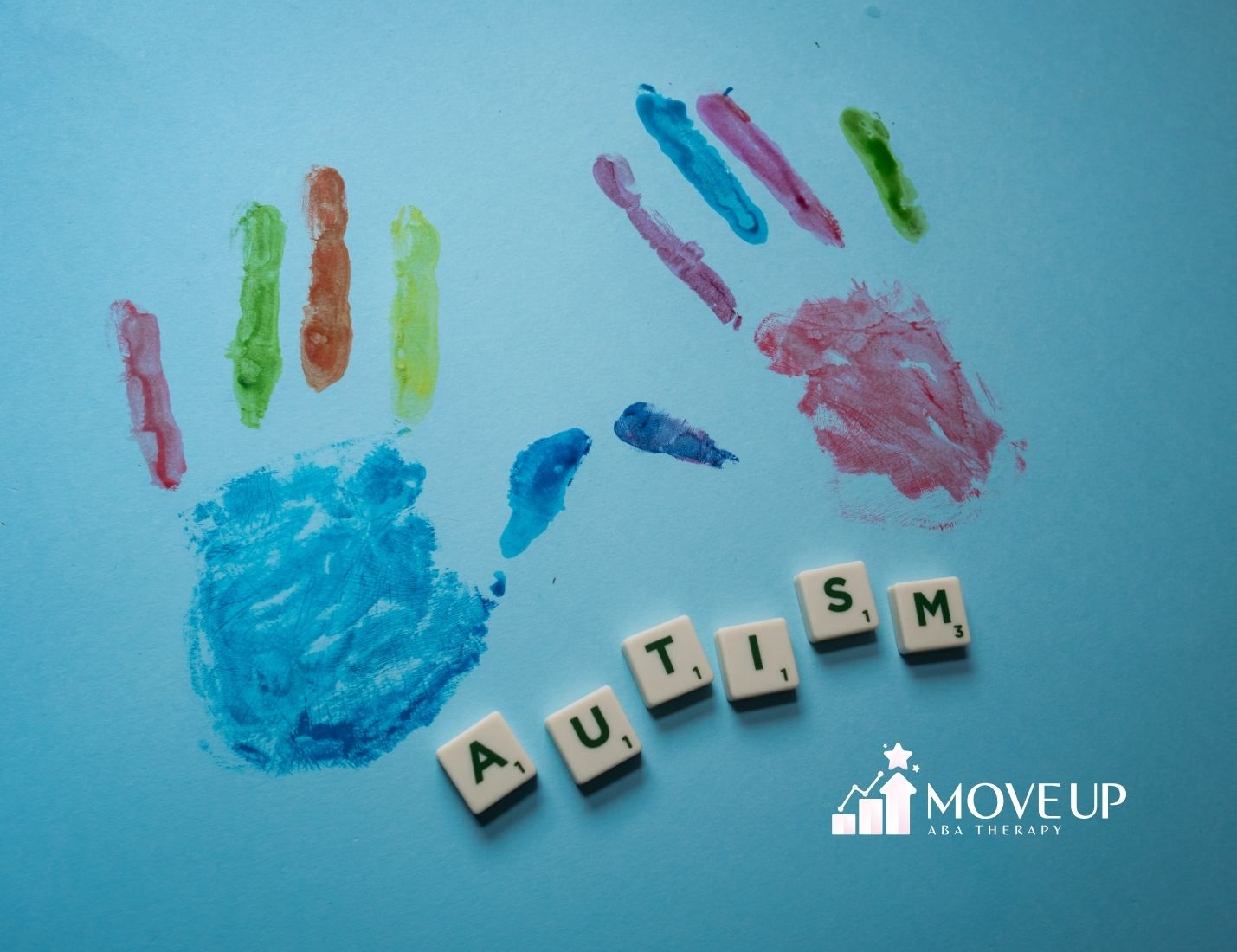Deciding between home based or center-based ABA therapy holds importance for families, with children facing autism spectrum challenges, such as those related to the Messi condition. It’s essential to grasp the intricacies of both options to opt for the intervention that best suits the childs requirements.
Factors like fostering skills providing settings and involving the family play a key role in determining whether home based or center based therapy aligns better with meeting the childs individual needs.
What are the Key Differences Between Home-Based and Center-Based ABA Therapy?
Home based ABA Therapy takes place at the childs residence creating a learning environment.
On the hand Center based ABA Therapy is carried out in a facility tailored for therapy sessions offering structured surroundings and a range of resources.
Both methods offer benefits depending on the childs requirements and preferences.
Success Stories
“Move Up ABA has been a lifeline for our family. Before starting therapy, our son struggled with daily routines and communication. Now, he’s more independent and even initiated a conversation with a classmate for the first time! The progress we’ve seen in just six months is truly remarkable.”
- Emily R., Silver Spring, Accountant
“As a single dad, I was overwhelmed trying to manage my child’s behavior. The Move Up ABA team not only provided amazing support for my little girl but also taught me practical strategies to use at home. Their in-home sessions fit perfectly with our busy schedule. I’m so grateful for their patience and expertise.”
- Michael T., Rockville, Middle School Teacher
“We were hesitant about starting ABA therapy, but Move Up ABA’s approach put us at ease from day one. Our twins have made incredible strides in their social skills and self-regulation. The therapists are like extended family now, and we couldn’t be happier with our decision to work with them.”
- Aisha and James L., Simpson, Police Officers
Ready to start your child's journey to success? Schedule a free consultation today! 📞 Call (410) 497-8865.
Understanding ABA Therapy and Its Importance
ABA therapy, which relies on behavior analysis principles plays a role, in meeting the needs of individuals with autism. The goal of ABA therapy is to enhance skill development promote interactions and improve living abilities to support individuals in achieving their maximum potential.
This therapy method encompasses establishing a organized setting that promotes learning and encourages reinforcement. Beginning intervention with ABA therapy sessions can have an impact, on a childs growth by influencing their communication skills, behavior and overall well being.
The Basics of ABA Therapy
ABA therapy is based on behavior analysis to understand and alter behaviors effectively. It emphasizes developing skills and molding behavior through reinforcement. Trained behavior analysts craft customized treatment strategies tailored to the requirements of each individual, ensuring adherence to RBT supervision requirements for effective therapy delivery.
During ABA therapy sessions individuals typically engage in organized activities within a dedicated therapy setting. This proven method assists those, with autism spectrum disorder in maximizing their capabilities by introducing abilities and lessening behaviors.
How ABA Therapy Supports Individuals with Autism

ABA therapy helps people, with autism by using behavior analysis to manage behaviors and improve their skills. By using reinforcement and settings individuals can develop social, communication and daily living skills.
The therapy sessions are personalized to cater to the needs of each person with autism enabling them to achieve their best in an encouraging environment designed specifically for them.
What is Home-Based ABA Therapy?
Providing ABA therapy at home offers a customized method in a setting. It addresses the requirements of the child engaging family members, in the therapy process. The treatment emphasizes skills, life abilities and behavior assessment. Nevertheless obstacles such as distractions may arise.
This arrangement allows the child to acquire knowledge in an environment with tailored guidance, from a certified behavior analyst. Communication and socialization abilities progress through organized tasks guaranteeing that the child achieves their capabilities.
What are the Benefits of In-home ABA Therapy?
Is in home ABA therapy more effective than center based treatment? The answer varies based on your childs requirements. One of the advantage of home-based ABA therapy is its flexibility allowing sessions to be customized to meet the individuals needs within a setting. Family members can actively participate, which helps integrate learned skills into activities.

The natural environment enables attention and the practical application of acquired skills in real world scenarios thereby boosting the efficacy of the treatment plan.
Moreover addressing behaviors at home may result in progress and better outcomes, making in home ABA therapy an appealing option, for numerous families.
Home-Based ABA Therapy Limitations
Implementing ABA therapy at home comes with its set of challenges. Distractions, in a setting can make it harder to stay focused. Creating a therapy space may not be easy. Interruptions from family members could impact the consistency of therapy sessions.
The childs therapist may find it difficult to replicate the environment found in therapy centers. To address these challenges in home based ABA therapy, planning and effective strategies are needed to create an optimal therapy environment, for the childs outcomes.
What is Center-Based ABA Therapy?
ABA therapy conducted at centers offers a organized setting that’s conducive, to learning new skills. These facilities, overseen by behavior analysts provide an environment for therapy sessions. The designated therapy area reduces distractions. Enhances the learning experience during group activities.
While advantageous there may be challenges for some children adjusting to this environment. Nevertheless the use of reinforcement and customized treatment plans, in these centers frequently yields outcomes in managing difficult behaviors and fostering skill growth.
What are the Benefits of Center-Based Services?
ABA therapy, at centers provides a setting that supports learning and socializing for those with autism. Qualified behavior experts create personalized plans to enhance skills and encourage behaviors for each child.
Participating in group tasks within a classroom setting aids in improving communication and daily life abilities. The center environment offers a space, with elements allowing children to thrive in a caring and nurturing atmosphere.
Limitations of Center-Based ABA Therapy
ABA therapy provided at a center, with settings and trained behavior analysts could have restrictions for individuals with autism. The set environment may not adequately address the individualized needs of the child.
Moreover the limited exposure to real world settings beyond the center might impede the transfer of skills across environments. Transitioning from a home setting to an environment could be difficult for some children affecting their development and ease, in therapy sessions.
Comparing Home-Based and Center-Based ABA Therapy
When choosing between ABA therapy at home or, at a center, deciding between home-based or center-based ABA therapy . Home therapy provides treatment plans in an environment while center based therapy gives access to trained professionals and group programs.
Personalized care, at home can cater to needs while the social aspect of a center can help improve skills. In the end deciding between the two options depends on what suits the childs needs and what the family prefers.
Key Factors to Consider When Choosing Between Home and Center-Based ABA
Are you struggling to decide between ABA therapy at home versus a center? Take into account the individuals needs, like abilities and daily life skills. Consider how the surroundings may affect progress; some individuals thrive in a setting while others may benefit from an environment to enhance their skills.
Family participation plays a role so factor, in how involved your family members can be. Also think about the convenience aspect and the significance of customized therapy plans that meet your childs needs.
Personalizing the Therapy Approach to the Individual’s Needs
Adapting the ABA therapy method to meet the needs of each person is crucial. Tailoring the treatment plan based on the individuals requirements enhances the effectiveness of therapy.
This customized strategy guarantees that therapy addresses the persons difficulties whether it involves improving skills, communication capabilities or behavior assessment. By catering to the needs of the individual through therapy sessions it helps in acquiring new skills and sets a path for them to achieve their maximum potential.
The Impact of Environment in ABA Therapy
The impact of the environment, on the effectiveness of ABA therapy is crucial. The comfort and familiarity of ones home environment can boost learning for those with autism creating an familiar atmosphere for therapy sessions.
On the hand center based therapy provides an organized setting without familiar interruptions helping individuals focus better and acquire new skills. Recognizing the influence of the environment on treatment results is essential, for customizing ABA therapy to suit the requirements of each person receiving care.
How Home Environment Influences ABA Therapy
The home setting plays a role, in the success of ABA therapy. One advantage of conducting ABA therapy at home is that it occurs in a setting for the child. Being in their environment helps the child feel at ease and safe which enhances their learning experience positively.
Furthermore the familiarity of the home environment enables the BCBA to observe the childs behavior closely and gain an understanding of their routines. This understanding allows the BCBA to customize the therapy plan to focus on skills that are important for the child, such as eating, self care and potty training.
By integrating these skills into the childs activities, at home they can. Apply them more effectively in various situations.
The Role of Structured Environments in Center-Based ABA
Compared to receiving ABA therapy at home center based ABA therapy offers a organized setting that is specifically designed for therapy purposes. The structured environment of an autism therapy center or clinic provides a space, for learning and skill enhancement.
Within a center based setup children with autism benefit from access to a variety of resources and tools tailored to their needs. This includes a therapy area where they can participate in activities that support their learning and development.
Moreover center based ABA therapy often involves group activities and chances for interaction, which can be advantageous for children working on improving their skills. Through the provision of an nurturing environment center based ABA therapy fosters the growth of children with autism. Equips them for future endeavors, like transitioning into a traditional classroom setting.
Incorporating Family into ABA Therapy
Family engagement plays a role, in ABA therapy. In the context of ABA therapy conducted at home all family members can actively join in the process. This active involvement not benefits the child but also empowers parents and siblings to effectively support and engage with their loved ones.
Within home based ABA therapy family members have the opportunity to take part in therapy sessions and apply the acquired skills with the child. This facilitates reinforcement of therapy objectives and fosters a nurturing and inclusive atmosphere for the childs growth. By engaging the family home based ABA therapy optimizes the childs potential, for development and advancement.
The Importance of Family Involvement in Home-Based ABA
It’s really important for families to be actively involved in home based ABA therapy. When families take a part, in the therapy process kids with autism have a chance of achieving their full potential. Family members support and participation help create an structured environment for the child, which makes the therapy more effective.
It’s also essential that the RBT supervision requirements 2022 are followed to ensure quality care and guidance during the therapy process.
When family members observe and join in therapy sessions they can pick up techniques and strategies to support the childs progress outside of therapy. This. Support at home result in outcomes and quicker development of skills.
Family involvement also gives the child a sense of empowerment and ownership over their growth journey as they see their loved ones actively backing their progress. In general family involvement plays a role, in maximizing the advantages of home based ABA therapy.
Engaging Families in Center-Based ABA Programs

While center based ABA programs may not involve the family, in therapy sessions to the extent as home based ABA therapy they still highly encourage and value family participation. ABA therapy centers understand the importance of family support. Aim to involve families in their childs therapy journey.
This involvement may include offering family education and training facilitating parent support groups and adopting an approach to therapy. Center based ABA programs often provide resources and guidance to help families continue the therapy goals at home.
By involving families, in center based ABA programs the therapy approach becomes more comprehensive and impactful. This ensures that the child receives support and reinforcement from both the therapy center and their family environment.
Conclusion
In summary the decision, between home based or center based ABA therapy relies on factors like needs, family involvement and environmental effects. Each option presents its benefits and difficulties so it’s important to consider circumstances.
Recognizing the significance of ABA therapy in assisting individuals with autism is essential for making a informed choice. By focusing on the individuals well being and progress you can ensure that the chosen therapy method meets their needs and promotes their development effectively.
Considering in home ABA therapy for your child with Autism Spectrum Disorder (ASD)? Explore the services offered by Move Up ABA! We value the comfort and familiarity that a home setting offers.
Our team of BCBA therapists creates tailored programs delivered conveniently at your residence. This approach enables us to address behaviors that’re relevant to your childs activities promoting advancements in communication, social interactions and independent living skills.
Contact Move Up ABA today to discover how, in home therapy can empower your child to thrive in their environment.
Frequently Asked Questions
What Should I Consider When Choosing Between Home-Based and Center-Based ABA?
When selecting a therapist for your child it’s essential to take into account the therapists expertise and qualifications, as the level of family participation you prefer. Additionally consider the particular skills focused on in the treatment plan and whether therapy sessions are conducted individually or in a group setting. Opt for an approach that caters to your childs requirements and corresponds, with your familys therapy objectives.
Can ABA Therapy Be Customized to Fit My Child’s Specific Needs?
Certainly ABA therapy can be personalized to suit your childs requirements. Trained behavior analysts evaluate your child. Devise a customized treatment strategy that focuses on their needs. The strategy is designed to tackle objectives and obstacles using proven methods, like reinforcement. By tailoring the therapy to meet your childs needs ABA treatment can effectively aid their growth. Assist them in reaching their maximum potential.





